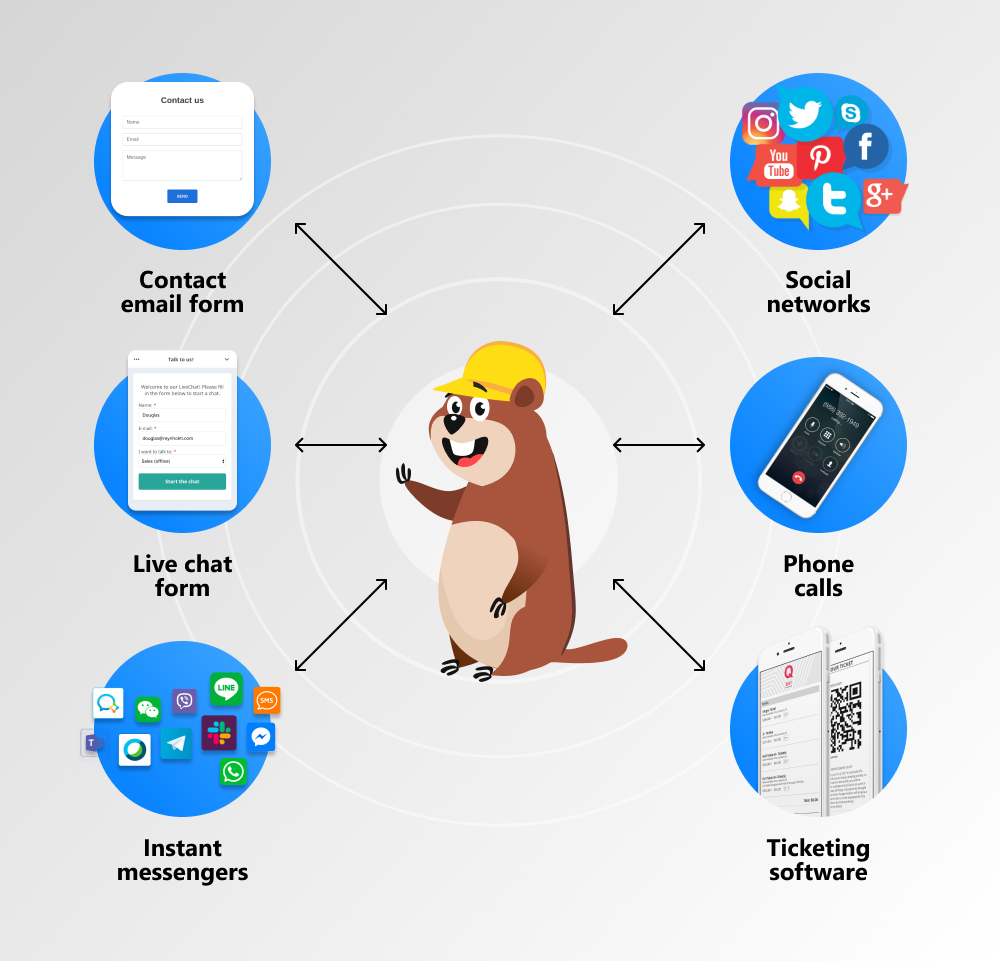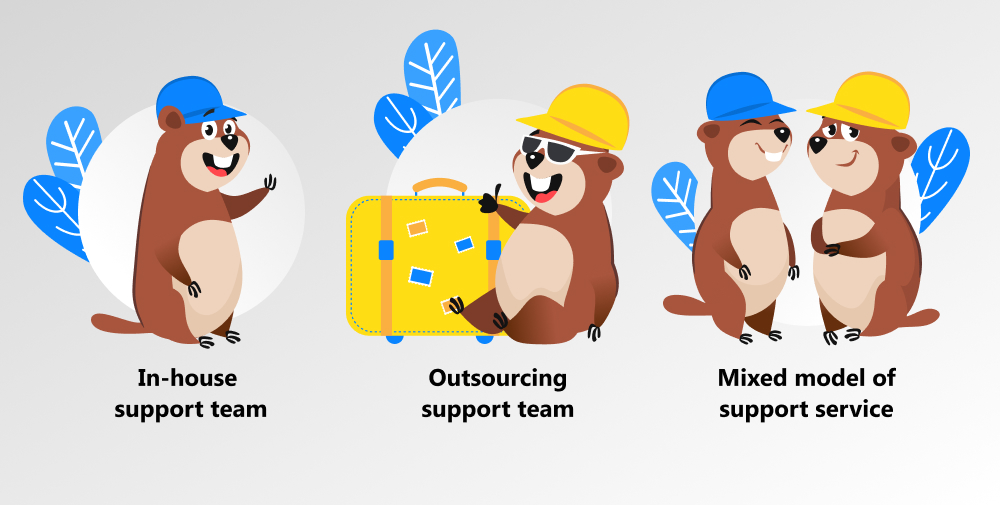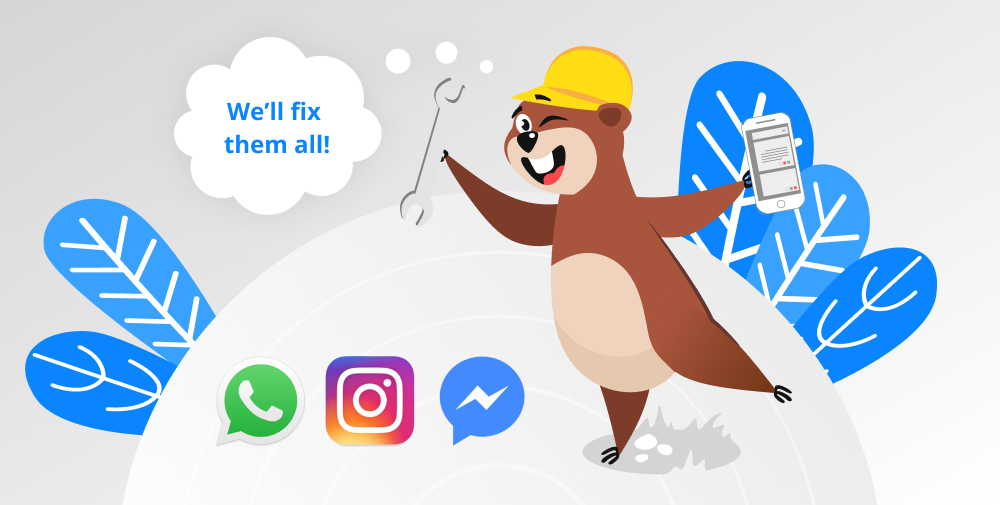Why is Starbucks so popular? What has turned a small coffee retailer into a world-known brand? Was it because of the innovative La Marzocco Linea Machine or extra-quality Arabica beans grown at higher altitudes? Those factors were important, but the core idea of the brand was the special care and support of their customers. What do Starbucks and application support models have in common?
You see, creating a great app is only the first step to success. Professional support, fast troubleshooting, and proactive development can turn an app idea into a future Starbucks. We made a brief guide to help you focus on the most essential factors in building a robust support model for your application.
written by:
Sergey Pupkevich
Head of Java Tech Cluster, Qulix Systems
Contents
How to Develop Application Support Models in Just Four Steps
Let us start with a short overview of where the market of ICT is right now. After a noticeable decline in 2020, the global market of the information technology industry is slowly moving towards its pre-pandemic value of $5.2 trillion. According to CompTIA's latest research, experts estimate a 5% compound annual growth rate till 2024.
One more essential notice, made by the researchers, is that among the most critical areas in the IT industry, the largest portions are given to first-line support (44%), server administration (55%), and networking (73%). Which is a vivid indicator of the constant demand of the industry for building robust support models for their products.
Deciding on the best support model for the app is no easy task, so we've singled out the following four milestone steps to smoothen things down for you.
Arrange Support Request Channels
The very first process businesses should arrange is providing effective tiered ways of support for their applications. Lightning-fast interaction with a support team and quick professional response are crucial matters for customer tolerance. According to WalkerInfo's report, positive customer experience has become the key brand differentiator in 2021 putting aside even the price and features of products.
That is why the perfect application support model should carefully cope with all the customers' needs. There are several support channels to choose from.
A contact email form is great for sending support requests and asking questions about specific details of the application.
A live chat form is effective for issues that need a fast response.
Instant messengers are quite popular channels among customers for contacting the support help desk.
Social networks provide a handy way of getting quick access to support services.
Phone calls are a traditional but still good-working solution for the fastest support in emergencies while using the application.
Ticketing software serves as a top-level support channel for arranging all the requests, assigning them to appropriate services, and monitoring the support process. Such tiered software services as Jira, or Backlog, allow the full view of all the requests for support and the stages of their solution.
Who is to answer all the questions for support staff? That is the other concern in building the application support model.
Determine Levels of Support Teams
Modern complex applications need a complex system to define the competencies of specialists responsible for support stages following the requests of their clients and the requirements of the technical surveillance. Well, the generally accepted approach to the levels of support is as follows.
Level 1 is the front level of the application support. Level 1 support staff meet the incoming requests: chat messages, user clients' calls, and emails. They monitor the application performance and check the alerts. Data from all the sources is collected by Level 1 support staff. They carefully analyze and prioritize it. Some quick fixes can be maintained automatically by bots or RPA. Then the support staff solve minor issues from control panels (like cPanel, DirectAdmin, Plesk) or assign more complicated cases to the next levels of the support model.
Level 2 is the level of specialized technical support for minor changes in the application. It can solve issues with configuration, bug fixes, services reboot, or account administration. Level 2 support staff also monitor application performance for potential slowdowns or bugs and proactively fixes them. They deal with most of the issues that require access to a backend server of the application (via RDP or SSH, for example). If the technical competence of Level 2 teams is not enough to solve the problems with the application, or when the problem requires a more advanced level of access (e.g., on the node level), the assignment is sent to a higher level.
Level 3 is the level of software support of the most complex issues in application maintenance. Here, specialists take on the task of major enhancements, changes in functionality, application migration, and upgrades — everything that requires high technical competence in cloud, infrastructure, node, and DC level operations.
Nowadays, you may find some more approaches towards the scaling range (like including Level 0 — when tech-savvy users fix their problems themselves with great manuals available; or providing some types of mixed levels — like Level 1.5 for minor tech issues which require professional help but not too specialized). The exact support team roles are going to depend on the particular support model. For a more industrially focused app, it is reasonable to have more Level 2 and 3 professionals. The application, which is more customer-centered, needs an extended support team of Level 1.
The perfect application support model will consist of specialists of all the aforementioned levels to provide quick responses to requests and problems. Our next building block is about the timing of these responses.
Set Time Limits
Support teams should react fast to solve the problems. But how fast is that “fast”? According to CMO Council, 75% of customers value quick response as the most important option for their good customer experience. A robust support model can guarantee that customers are going to stay satisfied and loyal if the application support staff reacts in short order and tries to resolve all the requests in a flash.
Applications in the spheres where any downtime can lead to large financial or reputation losses (e.g., in e-commerce or banking) require a support model of 24/7 available. The same schedule is required for critical internal systems of the application. For other types of business, it can be a rational solution to choose less intensive options, like 12/7 or 8/5, to reduce extra support staff costs.
One more important decision can also effectively cut support and maintenance expenses. That is where our next building tip goes.
Specify Support Sources
There are three main options companies should choose from while specifying the sources for their perfect application support model. They can create an in-house support team, delegate the responsibilities to a reliable outsourcing vendor of support services, or build a careful mix of in-house and outsourced specialists.
An in-house support team is hired, trained, and managed within the company and works using its equipment and resources. That is why the business should decide whether it is rational to expand their team with extra employees and provide them with extra resources for work. It should be added that the resources do not only include office space or computers: licenses, certificates, upgrades, and special tools are also quite costly.
An outsourcing support team provides solid expertise in technologies as well as specialized support staff that does not require additional training. Such teams can manage complex issues with the customers, technical and security assistance on the top level. They can deliver 24/7 support continuously. Outsourcing support service is fast (no need for long-term onboarding), adaptable (the team can be quite easily reduced or expanded), and cost-effective (the certificates, licenses, and other expenses are provided by the vendor). The outsourcing support team takes on the task of the support service and thus frees the resources of the application team to concentrate on internal improvement and business development of the product.
A mixed model of support service implies building an optimal balance of in-house specialists and a vendor or vendors, each of them responsible for a specific level of support to get access to the most advanced technology and effectively arrange the budget for application support.
Final Thoughts
So, our idea of building an ideal application support model is based on a clear understanding of the clients' needs and trying to meet them professionally and as fast as possible. Provide enough channels for communication for your application and use modern tiered solutions for their arrangement and management. Get specialized service on each level of application support. Set the time limits for response and maintenance and stick to them. And use the global pool of support professionals to provide the best assistance for your app and become the next loud brand on the market.
To get specialized advice on the best support model for your application, you are welcomed to contact our team. And keep up with our exciting blog for more cool stories.

Contacts
Feel free to get in touch with us! Use this contact form for an ASAP response.
Call us at +44 151 528 8015
E-mail us at request@qulix.com











